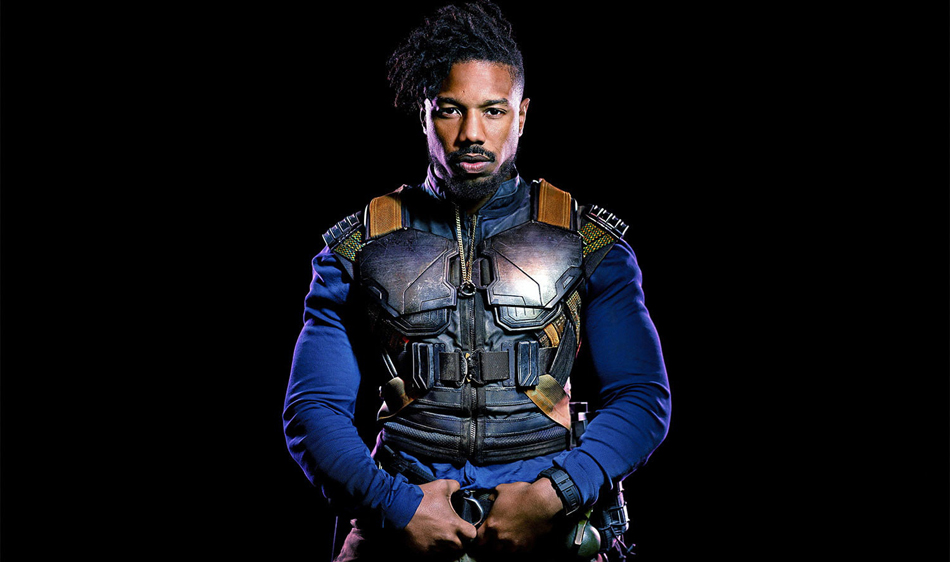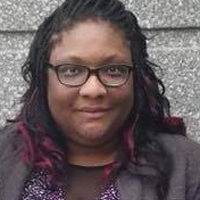
I did not expect to fall so completely for a villain as I did for Erik Killmonger. I don’t mean falling in lust for actor Michael B. Jordan’s body (which is not a bad thing). This type of falling is different. It was a deep connection with the character that came from a shared pain—Black pain—that director Ryan Coogler so seamlessly wove into the role and his story before unleashing it on screen in the film Black Panther.
Erik Killmonger is the depiction of Black pain that the Marvel Cinematic Universe (MCU) has needed for quite some time. Not even Luke Cage’s bulletproof power or Spawn or Blade’s need to protect the community came close. Killmonger goes farther than any previous Black character to embody that anguish of the Black community, in his background, his body, and his lived experiences. He ultimately drops all of these messy feelings at the feet of Wakanda alongside the swaddled body of Ulysses Klaw, a white man who was the cause of earlier destruction and death in Wakanda years ago in the film.
Kilmonger’s pain comes from living in “separate but equal”-style impoverished neighborhoods that are overrun by gun violence, abusive authority and death. In one scene, young Erik tells the spirit version of his father that “everybody dies” without emoting over the words. He has seen so many bodies drop, including his father’s, that the boy is jaded by death before he is old enough to enter middle school. His collective pain also comes from knowing that the same family who killed his father abandoned him to live in a place where Blackness is a liability, sometimes a death sentence.
The adult Killmonger, in turn, becomes a killer who stipples his body with scars dedicated to his kills. However, these scars feel so much like bullet wounds and a dedication to the gun violence that killed so many Black people in America—some of them caused by police, some of the uncapped rage released upon one another. Erik even describes the marks as symbols of kills, “some [of them] my own people.” In the context of the quote, he is referring to fellow military personnel, but it feels as if he is a voice of grief speaking out about the lives lost to guns turned on our people in the Black community.
Killmonger’s father taught him about Wakanda and the riches it held. Erik knew what the ship was when it left the night his dad died. The man we see entering Wakanda had been carrying that abandonment since boyhood. It is an abandonment that mirrors that of the American Black community, often seen as the lost people. Until Ancestry.com, most of us didn’t even know which African people we truly belonged to. Killmonger’s plight is even more burdensome as he knew his people and they knew him, but they also never came back for him. It makes not knowing seem so much sweeter.
Nowhere, however, is his distress more palpable than when he enters Wakanda, the nation of his father’s people—who also killed the father and abandoned the son. He has let his agony poison his mind and enhance his body so much so that in his fight with T’Challa, Killmonger’s sinewy arms, neck, and chest seem to swell even more as if his rage at the monarch, and his hurt at being abandoned by the Wakanda people long ago, strengthens him. Instead of the rage distracting him, Killmonger is able to channel it into a razor focus that temporarily wins him the throne. After that, we see that grief manifest into destruction. Killmonger wants to ship out Wakandan weapons and destroy the world as it is and create a new one under his totalitarian regime.
All of this makes his defeat bittersweet. The character is more complex than simply being evil. He becomes a product of his past, a victim poisoned by tormented emotions. In the end, we all are with T’Challa, who wants the American man to experience some good before he goes. We want to save him. But for Erik, the pain is too great to get rid of, the wound too deep to close. He references the Middle Passage in his death, letting T’Challa and the world know that this heartache goes back to slavery and is something that can’t be fixed with a prison cell, where so many Black people languish today.
By unleashing it upon the MCU, Coogler ensures that Killmonger’s Black pain, and that of an entire community, will be not only acknowledged by popular culture, but also taken in and understood. The struggles of the Black community will share a space in the conversation from now on because it has been legitimized as an issue of importance by the Marvel Cinematic Universe, its heroes, and villains. This instills the hope in fans like me that Killmonger won’t be the last character with whom we connect so completely.










